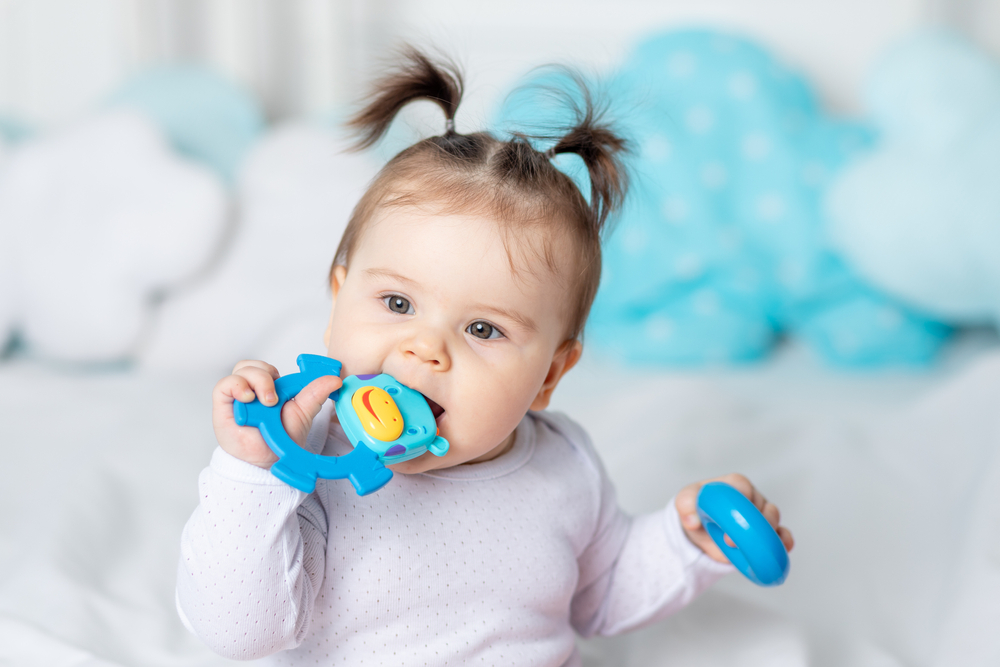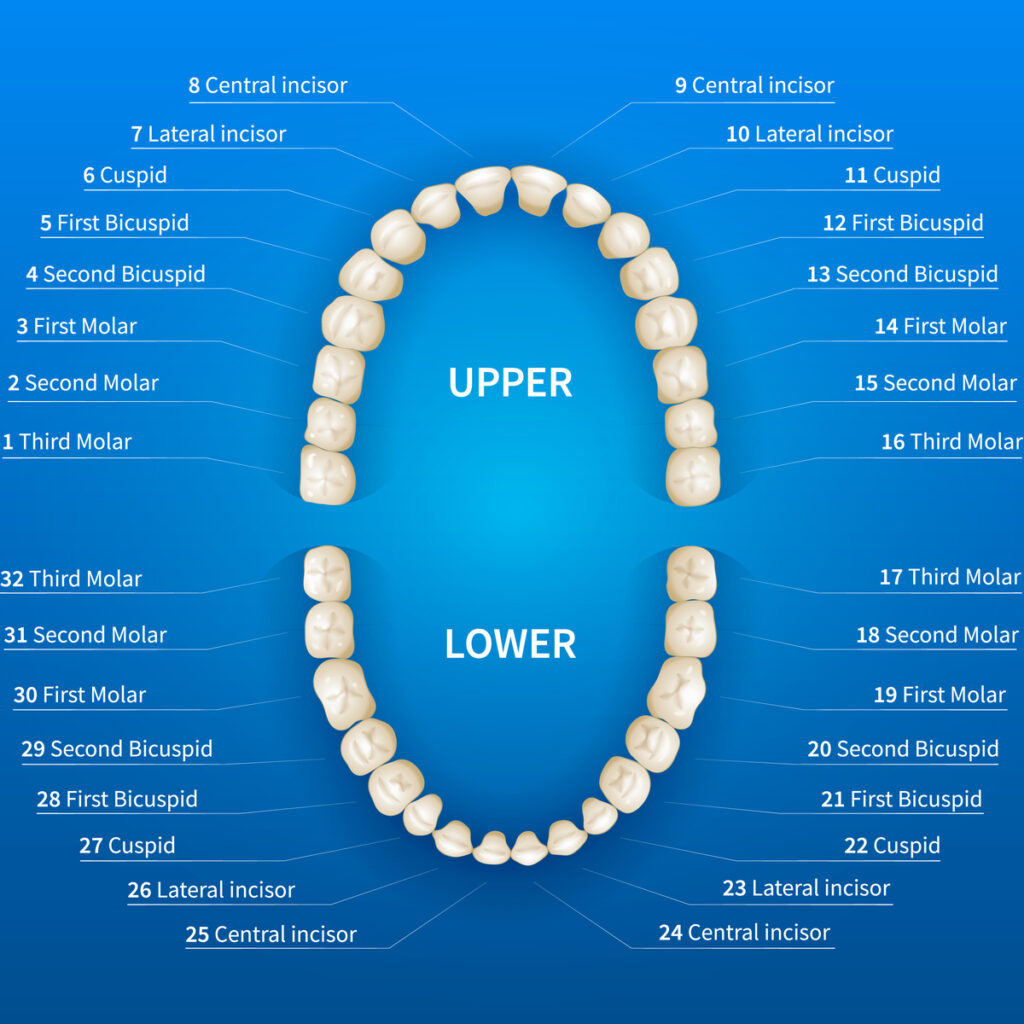When Should My Child's Baby Teeth Come-In?
If you are a new parent, you are sure to see hundreds of books and online articles that are designed to help you track your baby’s development. As parents, you want to make sure your child is healthy and developing at a normal rate. New parents first question when considering their child’s oral health is when can they expect teeth to show up. We want every parent to understand that children are different, and it is not uncommon for children to develop slightly faster or slower than the averages. However, in this article we will provide the expected average timeline for teeth development.

The Different Types Of Teeth:

When it comes to teeth it is important to understand the different types of teeth we develop.
- Incisors: In the front of our mouths, we have our incisors. There are 4 incisors on the top and 4 incisors on the bottom. These are broken into two groups; central and lateral incisors. These are the teeth we use to bite into our food.
- Canines: We also have four canines or cuspids. These are usually pointed teeth that sit between the molars and the lateral incisors.
- Pre Molars (bicuspids): In an adult mouth there are two sets of bicuspids between the molars and the canines. These teeth are not part of our first set of teeth. In a baby’s mouth, there are just incisors, canines, and molars.
- Molars: In the back of our mouths we have molars that act as our chewing teeth. Babies develop two sets of molars (8 teeth in all).
- Wisdom Teeth: Wisdom teeth (or third molars) are a final set of molars that many people need to have removed as there isn’t room for them.
Baby Teeth Timeline
Around your child’s first half birthday they will begin to teeth. The first teeth to show up are usually the bottom central incisors. A sign that these teeth are about to erupt is that your baby will begin to teeth, drool more, and may be more irritable.
Following the bottom central incisors, your child will start to develop their top two front teeth.
Around your child’s first birthday it is common for children to see their first set of lateral incisors show up next to their central incisors.
Your child’s final incisors will grow in near their first birthday. Around 16 months it is common for children to have all eight of their front teeth.
The first set of molars can start to show up around 13-19 months. Molars can be exceedingly painful for children because of their dull flat surface. You may notice your child’s teething more often and that your child is in more pain. Teething toys can help relieve some of the discomfort.
Around the same time the top molars come in so will the bottom set of first molars.
The top canines will start to show up right before your child’s second birthday and usually after the molars have begun to develop.
Around the time your baby starts to develop their top canines they will also develop their bottom canines. Around your child’s second birthday they will have their 8 incisors, 4 molars, and 4 canines. There may be a break in teething before the second molars come in.
There may be a brief period of time where your child is no longer teething and has their first 16 teeth. However, after a few months they will start to develop their second set of molars.
Around the time the bottom molars come in so will the top molars. A child usually finishes teething before their third birthday and will have all 20 of their baby teeth.
Adult Teeth Timeline
When your child is about 6 or 7 years old they will lose their bottom incisors and their adult teeth will replace them. Additionally a new set of molars will grow in behind their existing molars.
In the next year, it is common for children to lose their “two front teeth” as well as their bottom lateral incisors.
The final incisors are usually the top lateral incisors. At this point your child will have replaced all eight of their incisors and grown a set of molars behind their existing molars.
After the incisors have been replaced, your child will likely lose their bottom canines and have them replaced with adult canines.
Soon after the bottom canines are shed and replaced he top canines will also be replaced.
In the pre-teen years, your child will likely lose their baby molars, which will be replaced by two sets of bicuspids. Before becoming a teen it is common for kids to have lost all of their baby teeth and replaced them with adult teeth.
The final teeth to arrive are the back molars. Teenagers will usually have lost all of their teeth and replaced them with new teeth by this point. The final set of four molars grow in towards the end. At this point your teen will have all 28 teeth including 8 incisors, 4 canines, 8 bicuspids, and 8 molars.
Towards the end of high school or even the beginning of college your child may start to feel pain in the back of their mouth. Wisdom teeth, or third molars are often surgically removed because there is no room for them in the mouth. They can become impacted (meaning they get stuck under the gums) leading to infection. If your teen notices pain in the back of their mouth they should get dental x-rays.
When Should I Make A Dental Appointment For My Child?
It is recommended that you make a dental appointment for your child as soon as they turn six months old or their first teeth come in. Whichever happens first, a family dentist can be a great resource in tracking your child’s oral development and helping parents properly take care of their child’s teeth. From the moment teeth erupt, they need to be brushed regularly to protect them from decay.
Family Dentist in Lewiston Maine
If you live in Lewiston Maine or the surrounding towns, we would be happy to provide you with our family dental services. Give our office a call or use our online forms to get in contact with us and set up an appointment.
